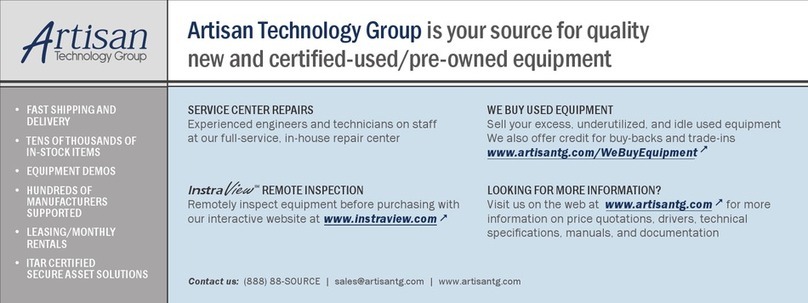
Installation
6. This chiller is equipped with a Phase Reverse Relay. The chiller will not start if the
phase sequence is incorrect. If the chiller fails to start upon installation, have a qualified
electrical technician check the Phase Reverse Relay in the electrical box of the chiller. If
the LED is not brightly lit, the phase sequence is incorrect. The technician should switch
any two of the wires at the incoming power source. Do not change any of the wiring
in the electrical box. Check again for proper phase sequence before proceeding with
these instructions.
7. When the previous steps are complete, turn the chiller on by placing the ON/OFF/SET
switch in the ON position. Immediately check for flow. If within five seconds no
turbulence is visible in the reservoir or the supply pressure gauge shows no pressure
reading, shut the chiller off by placing the ON/OFF/SET switch in the OFF position. If
flow is established, continue filling until the reservoir level rises to within a few inches of
the top. Do not allow the reservoir to overflow.
8. If the pump does not establish prime, disconnect the SUPPLY coolant line to vent any
trapped air, reconnect the line, and repeat step 7.
9. If the pump still does not prime, use the following steps:
a. Disconnect both coolant lines (have a container handy to catch any overflow from
the RETURN fitting).
b. Force coolant into the SUPPLY fitting. The fluid will force the air out of the lines
in the chiller and out of the pump head, causing it to escape into the reservoir. If
tap water will be the source of coolant, simply connect the tap water line to the
SUPPLY fitting and turn on the tap. If a source of coolant other than tap water
will be used, elevate the coolant a few feet above the chiller, connect to the
SUPPLY fitting, and let gravity force the air out into the reservoir. Remember to
have a container handy to catch any overflow from the RETURN fitting.
c. Reconnect the coolant lines and repeat step 7. Stop filling when the reservoir is
full to within a few inches of the top. Do not allow the reservoir to overflow.
A stainless steel mesh strainer attaches to the pump suction port near the bottom of the
reservoir. It can easily be removed for cleaning. First turn the pump off, then pull off the
strainer, rinse it clean, and push it back on. To protect the pump, routinely inspect the strainer
to be sure it is clean and properly attached. Hint: If the strainer is coated with debris, wrap it
with a plastic sandwich bag before pulling it off to keep most of the debris from escaping into the
reservoir.
Pressure Gauges
Two gauges on the unit provide information on the Facility Water Pressure condition. One is
labeled Facility Water In Pre-Strainer, one labeled Facility Water In Post-Strainer. Lydall
suggests that the customer takes a sample reading from these gauges soon after installation.
When the gauge pressure rises well above this sample reading it is time to check and clean the
strainer as instructed in the Maintenance section of this manual.




























